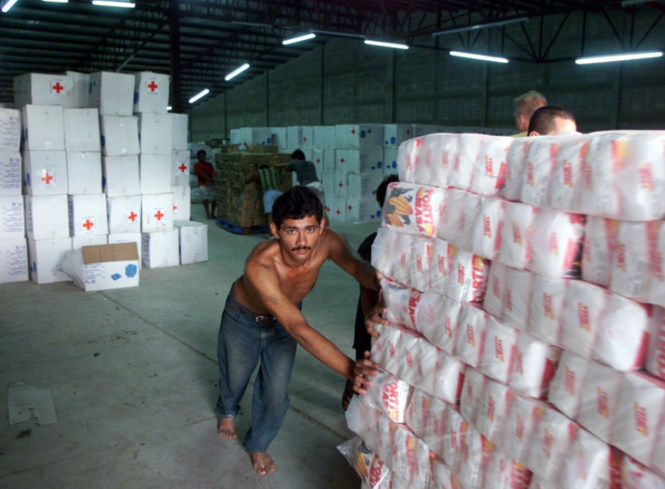
Central American states have adopted a landmark procedure to enable the facilitation of customs procedures for the transit of humanitarian relief through their territories. Within the framework of the Central American Integration System (SICA), the Council of Ministers for Economic Integration (COMIECO) adopted the new “Central American Procedure for the facilitation of custom transit of humanitarian relief items shipped by land” inApril 2017. From now on, this will allow for the expedited facilitation of relief items across all seven Central American states. The procedure came into effect in July 2017.
Along with the newly adopted Central American Protocol for the Shipment, Transit, and Reception of Humanitarian Assistance, the new procedure strengthens the Regional Mechanism for humanitarian assistance in cases of mid to large-scale disasters (also known as the “Mec-Reg”).
The Procedure also enhances the regional customs legislation, known as the Central American Uniform Customs Code (CAUCA) which sets forth the general framework for the dispatch of humanitarian relief items and provides for a simplified custom clearance procedure.
Adopting a large definition of humanitarian relief items, which encompasses a wide range of goods, the new SICA procedure provides for the following (i) systematizes registration with the customs office of departure and prior notification to the customs of arrival through the Single Transit Declaration (DUT) and; (ii) adopts, for each country, special codes to be visibly affixed on vehicles (for example, vehicles from Costa Rica (CR) transporting the “International Humanitarian Assistance” would be identified accordingly i.e. “CR-AHI”. In practice, this codification will facilitate the identification of vehicles transporting humanitarian relief items, and thus their priority access for clearance at custom checkpoints across Central America.
The importance of ensuring proper implementation of the procedure was recalled at the CEPREDENAC high-level Fourth Regional Consultative Forum on the Central American Policy for Integrated Disaster Risk Management (PCGIR) in August 2017. This event saw 350 participants from all relevant sectors and from national and regional institutions, gather together to revise and align the PCGIR with the Sendai Framework for Disaster Risk Reduction 2015-2030.
To disseminate and strengthen knowledge of national authorities about the Procedure, CEPREDENAC also held a special training on the implementation of the procedure in August 2017 in Guatemala, gathering together participants from the national Coordination Centers for Humanitarian Assistance (CCAH), the Executive Board of the National Coordinator for Disaster Reduction (SE-CONRED), national custom authorities and the SIECA.
In Panama, with the technical support of CEPREDENAC and the SIECA, a workshop on the implementation of the procedure has also recently been held in August 2017. Potential support from National Red Cross Societies across Central America for the effective implementation of the procedure will be discussed at a workshop to be held by CEPREDENAC at the end of September 2017 in Nicaragua.
All in all, the new procedure is an important step forward to better facilitating, harmonizing and simplifying the transit of humanitarian relief items after disasters, to reach those in need.